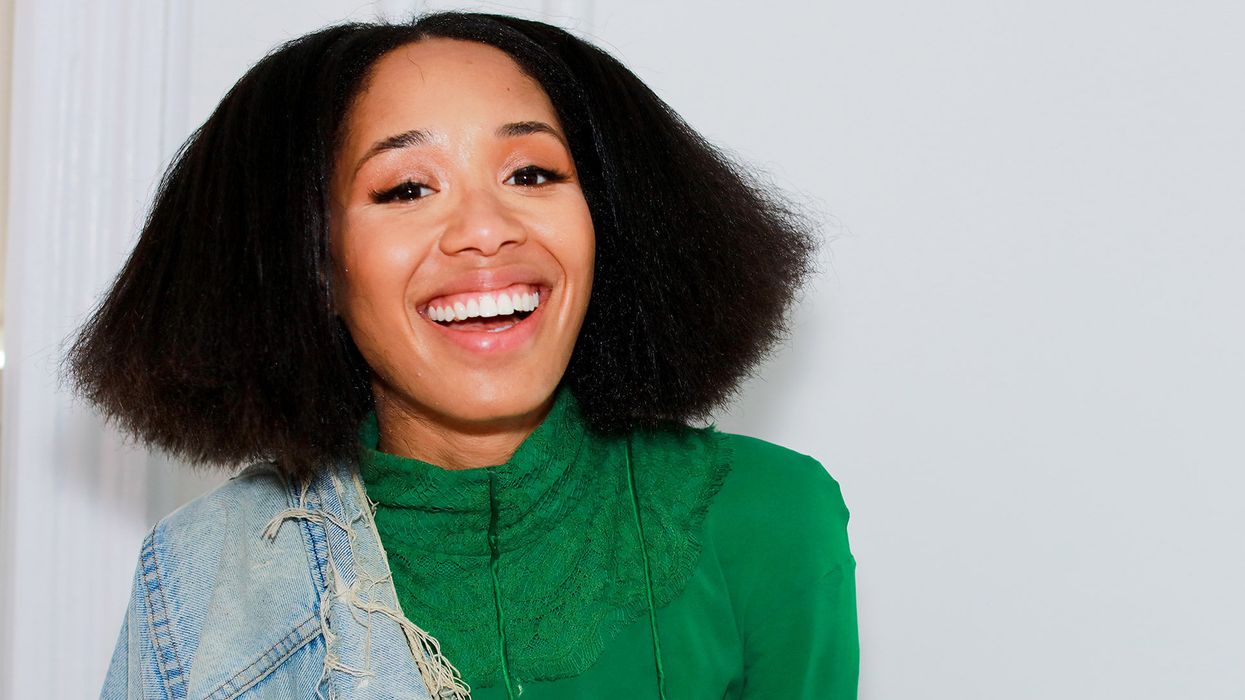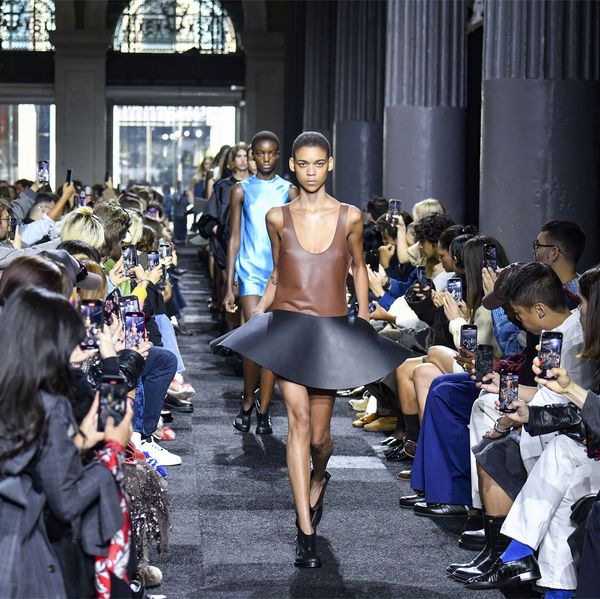
15 April, 2020
10 November, 2021
Have you ever wondered about the comma-shaped lines on either side of your mouth? And why they tend to get so much worse as we age? Meet...the nasolabial fold, whose admittedly silly name makes them no less worrisome. “Nasolabial folds, laugh lines, smile lines—no matter what you call them, they’re one of the first places where we betray our age,” explains nurse practitioner Chelsi Dayrit. “Loss of volume, collagen, and elasticity make the folds appear to deepen over time, creating shadows that run from our nose to our mouth.”
You, dear reader, may have already researched or tried augmenting your lips and cheeks. Treating our lower faces, however, seems so much less exciting, less trendy, like something our moms would worry about. “But you have to remember: Places that experience repetitive movement, like the crow’s-feet and the mouth, are the first to suffer,” says physician assistant Lisa Hartman. “Nasolabial folds in particular are a dead giveaway to someone’s age. They can make us appear sad, tired, or angry, even when we aren’t.”
If you, like me, just turned 30 and are starting to worry about smile lines—calm down. Frowning only makes them worse! You should also avoid the urge to bombard that area with Botox and fillers, as treating the folds directly isn’t necessarily the way to go. “We prefer to treat other areas of the face that can lift and diminish the folds,” continues Hartman. “We have to be careful not to take away the folds entirely, as overfilling or overcorrecting this area can create an unattractive and unnatural look. People should have a slight shadow at the sides of the nose.”
To learn more about how to best tackle nasolabial folds, I spoke with experts across the country about their preferred treatments. Although they all agreed that it’s best to start with fillers, injectables may not be enough in order to achieve your desired effect. Below are four treatments that will send your laugh lines running, from least to most expensive.
You, dear reader, may have already researched or tried augmenting your lips and cheeks. Treating our lower faces, however, seems so much less exciting, less trendy, like something our moms would worry about. “But you have to remember: Places that experience repetitive movement, like the crow’s-feet and the mouth, are the first to suffer,” says physician assistant Lisa Hartman. “Nasolabial folds in particular are a dead giveaway to someone’s age. They can make us appear sad, tired, or angry, even when we aren’t.”
If you, like me, just turned 30 and are starting to worry about smile lines—calm down. Frowning only makes them worse! You should also avoid the urge to bombard that area with Botox and fillers, as treating the folds directly isn’t necessarily the way to go. “We prefer to treat other areas of the face that can lift and diminish the folds,” continues Hartman. “We have to be careful not to take away the folds entirely, as overfilling or overcorrecting this area can create an unattractive and unnatural look. People should have a slight shadow at the sides of the nose.”
To learn more about how to best tackle nasolabial folds, I spoke with experts across the country about their preferred treatments. Although they all agreed that it’s best to start with fillers, injectables may not be enough in order to achieve your desired effect. Below are four treatments that will send your laugh lines running, from least to most expensive.
1. Injectable Fillers: Nurse Practitioner Chelsi Dayrit of OnCall.Med
“Counter to what you might believe, the first line of defense when treating nasolabial folds is not to inject the folds themselves. Instead, we start by replacing volume in the mid- and upper face. Filling your cheekbones and temples with a product like Voluma will lift the lower face and soften shadows around the mouth, essentially functioning as an injectable face-lift.
“Only after I’ve treated these other areas will I consider injecting the folds—with a flexible hyaluronic filler, since that area sees a lot of movement. As with all injectables, there are risks like bruising and swelling, but arnica supplements, icing, and the avoidance of blood thinners and alcohol can help mitigate side effects. Depending on the amount of volume loss, some patients may need multiple syringes, which range from $600–$900+ each. Patients in their late 20s and early 30s often require two syringes to address nasolabial folds, with results lasting six to 12 months, depending on the type of filler used.”
2. The Halo Laser: Dr. Sheila Nazarian of Nazarian Plastic Surgery
“There are three factors that contribute to the prominence of nasolabial folds as we age: the regression of the bony area in front of the smile line, the shifting down of the fat above the smile line with gravity, and the loss of collagen and elastin in our skin. [Laser treatments like] the Halo tackle the latter. A combination ablative and nonablative laser, the Halo treats superficial creasing with [approximately one week] of downtime. Not only will it resurface the skin to address sun damage and fine lines, but it also increases collagen production and tightens the skin.
“Halo treatments are usually performed once and then repeated every two years, but if the damage is severe, two treatments spaced three months apart may be necessary at first. This treatment runs about $2,200 with side effects including swelling and flaking of the skin. It is also extremely important to avoid the sun while healing.”
3. Thread Lift: Physician Assistant Lisa Hartman of Soignez-Vous Aesthetics
“PDO threads are medical-grade threads—made of protein and smaller than a strand of hair—that we place under the skin in order to both pull back [the face] and trigger collagen production. The threads themselves are absorbed by the body in two to six months, depending on thread type, but the effects can last upwards of one to two years. They work nicely on their own or in conjunction with fillers. I often start with fillers and then progress to threads.
“If a client starts to require larger than average quantities of fillers and threads, I then refer them out for facial plastic surgery. It’s better not to chase after an unrealistic expectation both for your sanity and pocket book. Common side effects of PDO threads are swelling, redness, site discomfort, and irregular texture that is typically temporary. In New York City, you can expect to pay between $1,500–$7,000, depending on the number and brand of threads used. The average client in my practice pays around $3,000.”
4. Ultherapy: Dr. William Kestin
“Ultherapy, which is just a fancy word for ultrasound therapy, is the only nonsurgical face-lift approved by the FDA. Ultherapy can work as a potent tightener to pull back the skin and stimulate collagen. [Unlike lasers], it skips the surface layer of the skin, sending targeted ultrasound energy to the right place and at the right temperature. A full face treatment takes about two hours, with results generally lasting about one year after a single treatment. Side effects—including tenderness and occasional bruising—are usually minimal and resolve quickly.
“The two main downsides of the procedure are the three- to six-month lag time before you see the full effect, and the discomfort of the procedure itself, which we control with oral pain meds and inhaled Nitrous oxide on demand. It averages between $4,000 and $5,000 per treatment.”
Nurse Practitioner Annette Shon, who was originally scheduled to participate in this article, is working a COVID-19 unit in Los Angeles. Please support her on Instagram.
Want more stories like this?
Finally, the Truth about Skin-Firming Products
If You’ve Never Gotten Filler Here’s the Deal
The Subtle New Alternative to Lip Fillers




